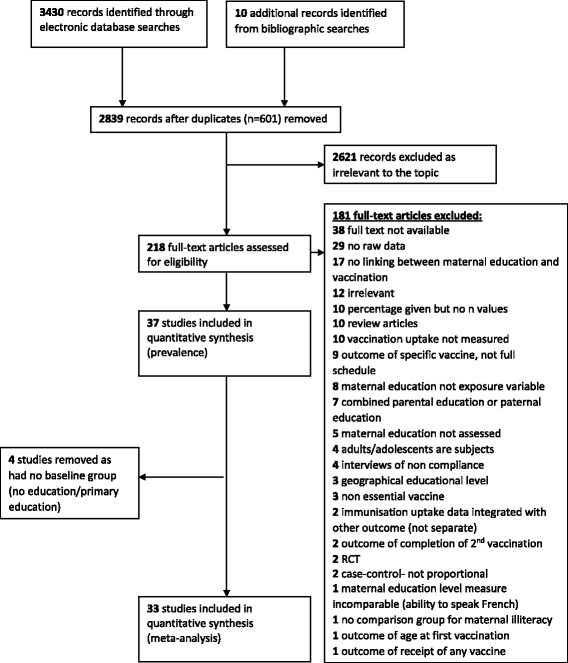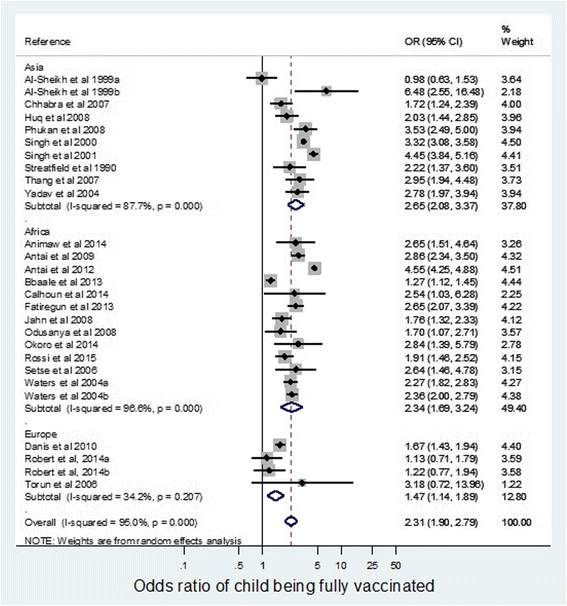The global effect of maternal education on complete childhood vaccination: a systematic review and meta-analysis
- PMID: 29281990
- PMCID: PMC5745980
- DOI: 10.1186/s12879-017-2890-y
The global effect of maternal education on complete childhood vaccination: a systematic review and meta-analysis
Abstract
Background: There is an established correlation between maternal education and reduction in childhood mortality. One proposed link is that an increase in maternal education will lead to an increase in health care access and vaccine uptake. Vaccinations are a central preventative child health tool, therefore demonstrating the importance of understanding factors that can improve coverage. This review aims to establish if there is a correlation between increasing maternal education and vaccine uptake and if this varies between continents, setting and time.
Methods: An electronic database search was conducted using Medline Ovid, Embase and The Cochrane Library using a combination of keywords and appropriate MeSH terms for maternal education and child vaccination. Bibliographies were also hand searched. Data was extracted and entered onto a Microsoft Excel spreadsheet and analysed using STATA 13.0 software. The primary outcome of effect size of maternal education on completion of childhood vaccinations was analysed at different levels. Secondary outcomes were explored using subgroup analyses of differences between continents, rural or urban settings, and dates.
Results: The online search yielded 3430 papers, 37 were included in this study. The analysis showed increasing child vaccination uptake with increasing maternal education. Overall, analysis showed that the odds of full childhood vaccination were 2.3 times greater in children whose mother received secondary or higher education when compared to children whose mother had no education. There was large variability in the effect size between the studies included.
Conclusions: Improving maternal education is important for increasing childhood vaccination uptake and coverage. Further research is needed in higher income countries.
Trial registration: PROSPERO Registration No: CRD42016042409 .
Keywords: Child health; Immunisation; Maternal education; Vaccination.
Conflict of interest statement
Ethics approval and consent to participate
Not applicable.
Consent for publication
Not applicable.
Competing interests
The authors declare that they have no competing interests.
Publisher’s Note
Springer Nature remains neutral with regard to jurisdictional claims in published maps and institutional affiliations.
Figures






References
-
- World Health Organization . State of the world ’ s vaccines and immunization. 2009. pp. 1–212.
Publication types
MeSH terms
Grants and funding
LinkOut - more resources
Full Text Sources
Other Literature Sources
Medical

